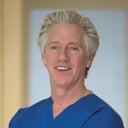Posted underFacial Fat Transfer q&a
What are the risks of a stroke or necrosis after fat grafts to the cheeks? Is the risk only immediate or there even years after?
I want to get fat grafts to the cheeks but am concerned with stroke or necrosis, what are the risks and will I know right away or am I always at risk after receiving?
Answers (5)
From board-certified doctors and trusted medical professionals
Dr. Jason Emer, MD

Dr. Jason Emer, MD
Dermatologic Surgeon, Board Certified in Dermatology
Answer
Dr. Michele A. Shermak, MD

Dr. Michele A. Shermak, MD
Board Certified Plastic Surgeon
Answer
Dr. John J. Martin, Jr., MD

Dr. John J. Martin, Jr., MD
Oculoplastic Surgeon, Board Certified in Ophthalmology
Answer
Dr. James E. Chappell, MD

Dr. James E. Chappell, MD
Board Certified Plastic Surgeon
Answer
More Facial Fat Transfer Questions
See all Facial Fat Transfer Q&AWE SEND PRETTY
EMAILS
What’s trending? Who’s turning heads? Which TikTok myths need busting? We’ve got you. No fluff, no gatekeeping—just real talk. Get our free, unfiltered newsletter.